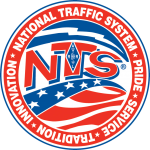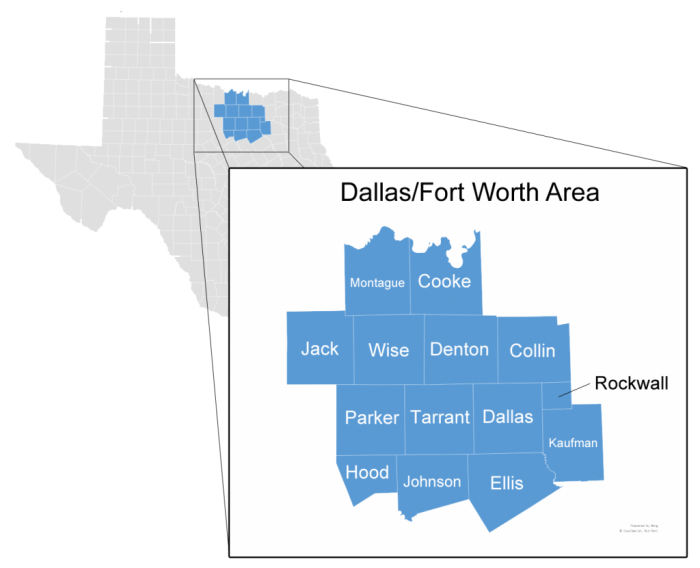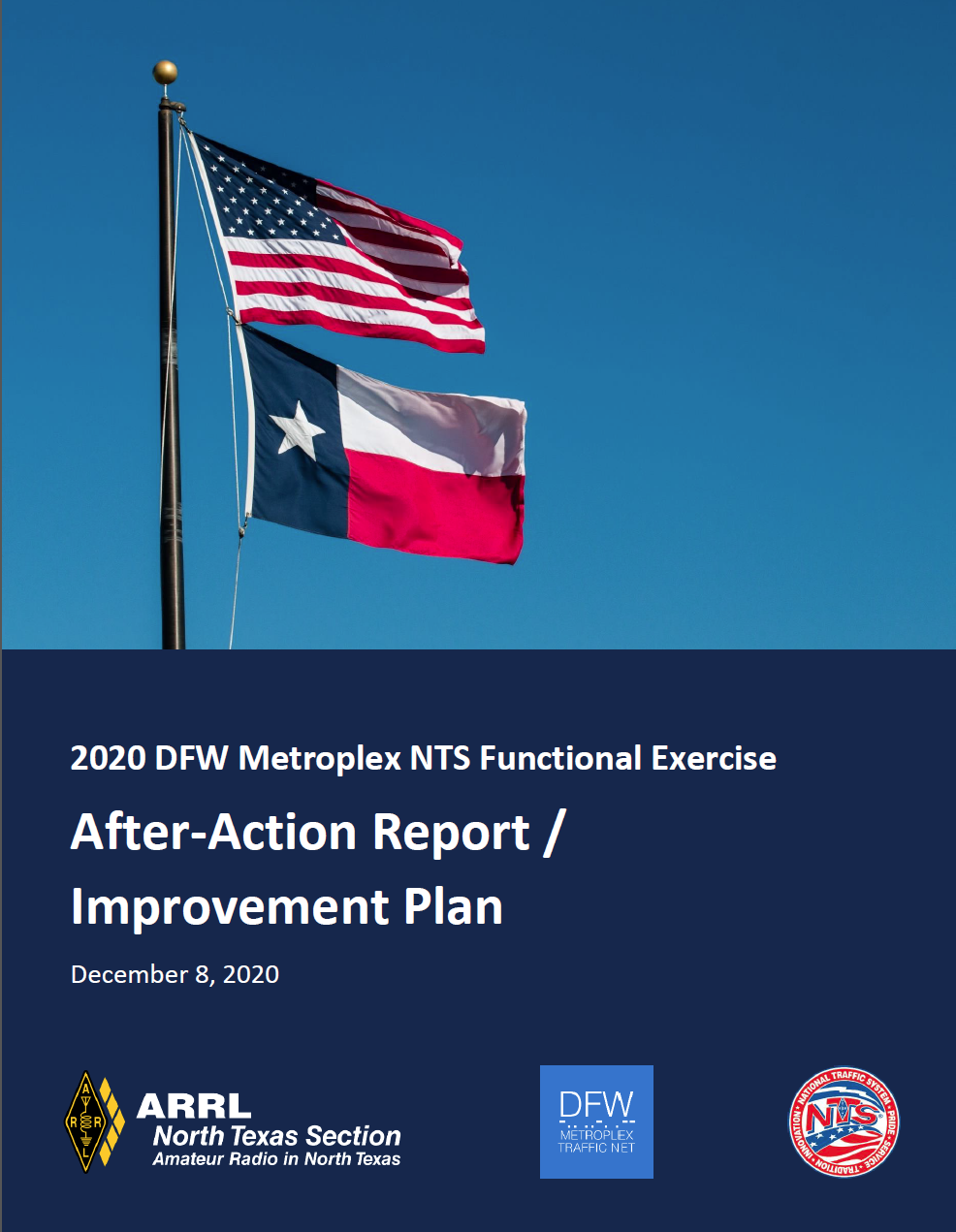UPDATE: December 11, 2020
Our thanks to everyone that participated in the exercise! The After Action Report / Improvement Plan is now available. This report details the exercise flow, as well as strengths and areas for improvement that were identified. It also covers upcoming plans to help build traffic handling skills.
For now, we are keeping the exercise information below as it was originally posted so that you can review how we approached informing participants and outlining expectations. The exercise dashboard will also remain available for now.
We invite you to check out the AAR/IP and we look forward to holding our next exercise soon. Thank you again for your help and support!
73,
Sean AA5SA, Korky KG5NNA, and Aaron K8AMH, the DFW Metroplex Traffic Net Managers and the ARRL Section Traffic Manager
2020 DFW Metroplex NTS Functional Exercise
November 7, 2020
10 am – 2 pm
All traffic handlers in the Metroplex are invited to participate



Why are we running a functional exercise?
A functional exercise provides a way to evaluate capabilities and multiple functions using a simulated response.
This exercise will help us evaluate system readiness and allow traffic handling stations to practice their skills in a simulated real-world scenario. It is being executed by the DFW Metroplex Traffic Net managers and the ARRL North Texas Section Traffic Manager as part of evaluating NTS readiness in the North Texas Section during a major incident.
How will the exercise be carried out?
This exercise will take place across the Dallas/Fort Worth Metroplex during the dedicated time period above with specific instructions for traffic handling stations, net control stations, net managers, Section Traffic Manager, and Official Relay Stations to follow to:
Traffic handling stations will be asked to originate traffic to a simulated Emergency Operations Center containing a real-world situational report on cellular network connectivity. Net control stations will track check-ins and coordinate relaying listed traffic efficiently and according to precedence. All exercise participants will be asked to keep and turn in information at the conclusion of the exercise to help with evaluation. Specific details are available in the Exercise Documents below.
Winlink, EchoLink AllStar, and similar options are not permitted during the exercise
EchoLink, AllStar, or other options that are not over the air are not permitted during the exercise. Additionally, radiograms via Winlink, even if over the air via packet or other means, are also not permitted as the focus of this exercise is having traffic handlers check in and relay their traffic on the repeater-based traffic net.
How can I participate?
If you have a real-world emergency at any time during the exercise, break into the net using the prowords BREAK BREAK followed by your call sign and the words, “real-world emergency.”
Please do not check in “for the count”
While we appreciate everyone’s enthusiasm and desire to help, we will only be taking check-ins from amateur radio operators with exercise traffic. Those checking in during the exercise that do not have exercise-related traffic, including those checking in “for the count,” will be asked to not participate.
Here is what you can do to prepare for and participate in the exercise
These repeaters are linked – use the repeater you prefer.
2 meters
146.72 MHz
Negative offset (-600 kHz)
PL Tone 110.9
1.25 meters
224.40 MHz
Negative offset (-1.6 MHz)
No PL Tone
70 centimeters
442.675 MHz
Positive offset (+5 MHz)
PL Tone 110.9
Traffic handling education resources
While one of the goals of the DFW Metroplex Traffic Net is to provide training, during an incident or an exercise we are not able to provide real-time training as we are focused on incident-related traffic. Please prepare beforehand as once the disaster begins, the time to prepare ends.
You can become familiar with traffic handling before the exercise by:

Functional Exercise Area
Traffic handlers can participate from anywhere in the DFW Metropolex Traffic Net service area using over-the-air capabilities to reach the repeater-based traffic net.
